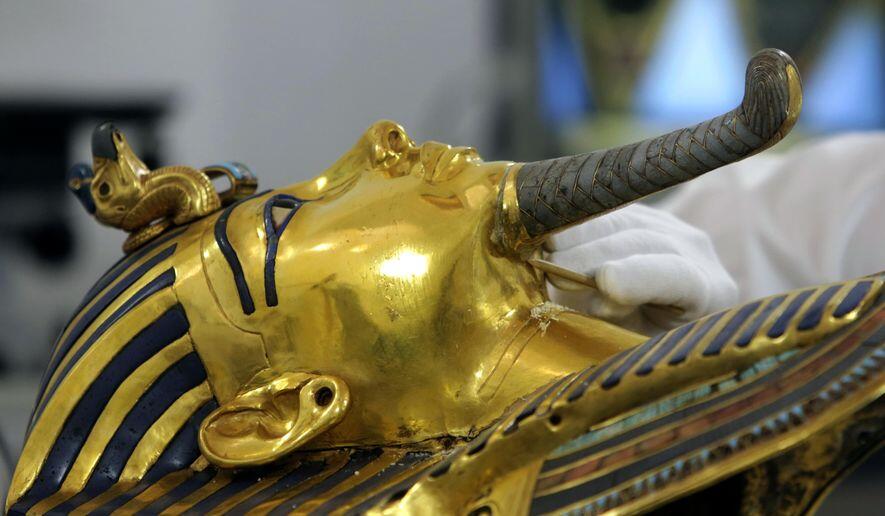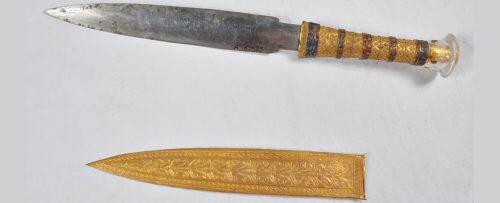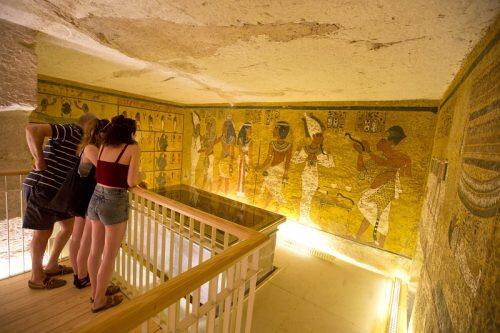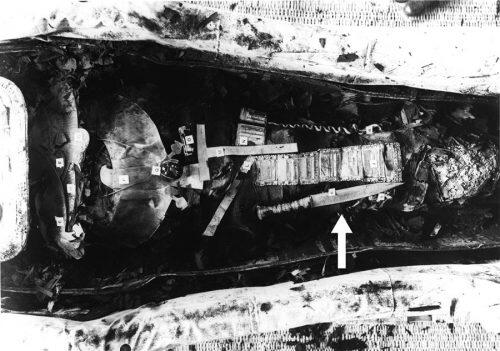The Egyptian pyramids are full of mysteries until our day. Scientists always find new secrets related to the pharaohs. Nearly every bit of information about this “secret” world, as every new discovery proves, drives the attention of many people around the world. So what is the newest discovery in the “land of the desert”?
The new discovery has to do with King Tutankhamun, who was an Egyptian pharaoh of the 18th dynasty (ruled c. 1332–1323 BC in the conventional chronology), during the period of Egyptian history known as the New Kingdom or sometimes the New Empire Period.
After ruling for 10 years as a pharaoh, Kinf “Tut” died, at the age of 19. His mysterious death has made him one of the most famous pharaohs until today.
New Discovery
A joint team of researchers from Italy and Egypt say they’ve found evidence that suggests King Tut’s golden dagger, which was buried entombed with him in his sarcophagus, is a space dagger made from a meteorite (mostly composed of iron and nickel).
The team was able to study the blade’s composition by using non-invasive X-ray fluorescence spectrometer (a technique that allows scientists to look ‘inside’ any object).
American tourists visit King Tutankhamun’s burial chamber at his tomb at the Valley of the Kings in Luxor, Egypt, Thursday, March 31, 2016. A radar surveys is scheduled Thursday by Japanese radar technologist to confirm or deny claims that King Tutankhamun’s tomb contains hidden undiscovered chambers. (AP Photo/Amr Nabil)
“Meteoric iron is clearly indicated by the presence of a high percentages of nickel,” team leader Daniela Comelli from Milan Polytechnic in Italy told Discovery News.
She added that “The nickel and cobalt ratio in the dagger blade is consistent with that of iron meteorites that have preserved the primitive chondritic ratio during planetary differentiation in the early solar system.”
The blade was originally described by Howard Carter in 1925 as “a highly ornamented gold dagger with crystal knob”, reports Rossella Lorenzi for Discovery News.
The mummy of King Tutankhamun. Black and white picture of Tutankhamun mummy showing the iron dagger (34.2 cm long) placed on the right thigh (arrowed)..© Griffith Institute, University of Oxford
“We took into consideration all meteorites found within an area of 2,000 km in radius centred in the Red Sea, and we ended up with 20 iron meteorites,”Comelli said. “Only one, named Kharga, turned out to have nickel and cobalt contents which are possibly consistent with the composition of the blade.”
Tut’s necklace, which was previously thought to be made from chalcedony – a type of quartz – is actually made of Libyan desert silica glass.
This type of glass forms when a meteor hits sand, for example, the sand of the Great Sand Sea of Egypt – an area that lies roughly 804 km (500 miles) away from where ancient Egyptians called home, Lorenzi reports.
While no one is sure exactly why meteor materials were beloved at this time, it’s likely that Egyptians thought meteoric iron was a divine substance, since it fell from the heavens.
Start of the Iron Age?
But how is the dagger’s discovery related to the iron age?
Scientists say that this discovery predates the start of the Iron Age by about 100 years. And since it’s constructed so well, researchers say its existence hints at the fact that ancient Egyptians had an understanding of iron long before the rest of humanity did.
We hope that technology will allow us to look inside ancient objects without damaging them, and about Tutankhamun’s new discovery, it surely won’t be the last; On the other hand, this might just be the beginning of a new type of discoveries in the “mystery” that mezmerizes the world (the pyramids)… “Extraterrestrial discoveries”.














